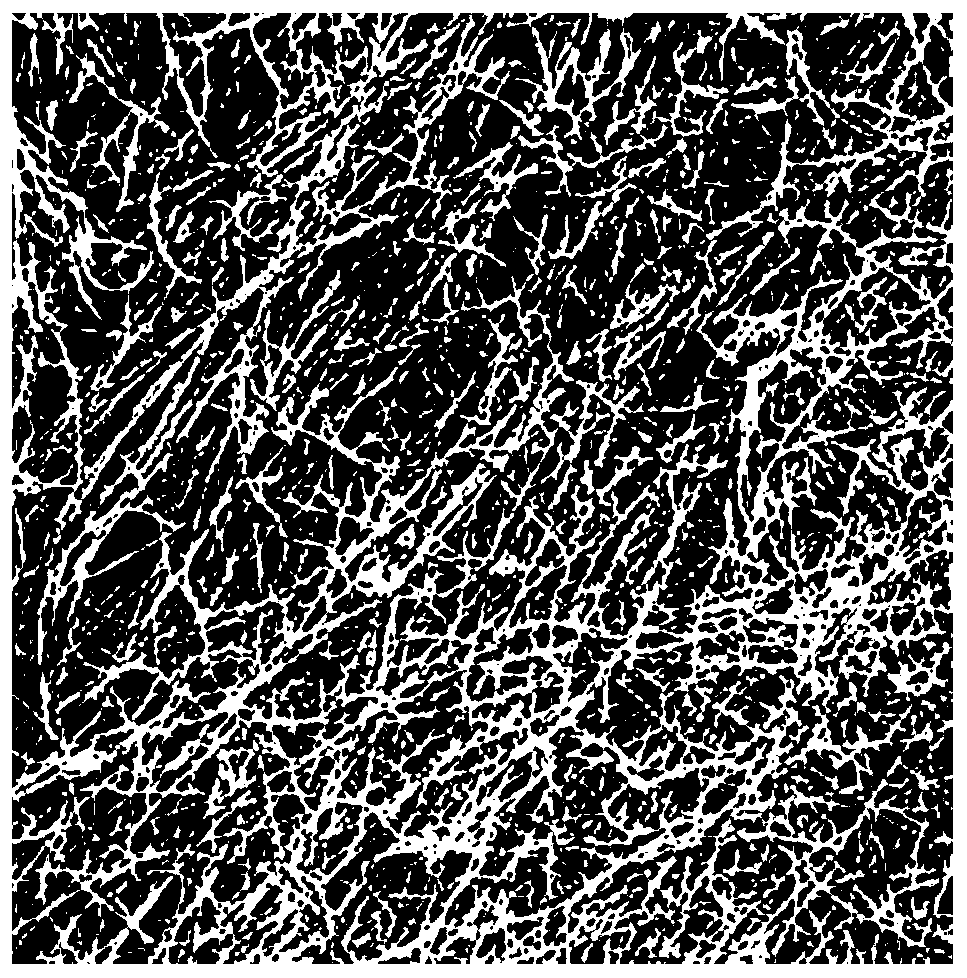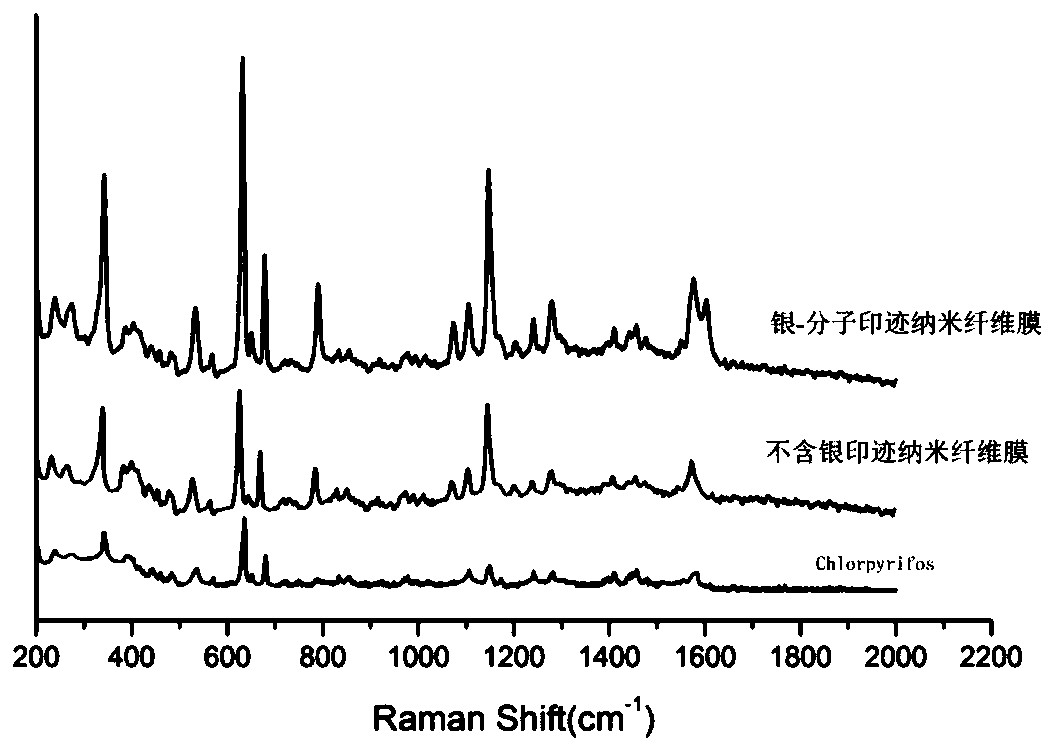Preparation method, application and detection method of molecular imprinting nanofiber reinforced basement membrane
A nanofiber membrane and nanofiber technology, applied in the field of analysis, can solve the problems of easy aggregation and sedimentation of metal nanoparticles, lower utilization rate of metal particles, and not easy to disperse, etc., achieve good SERS effect, simplify preparation steps, and improve SERS detection effect Effect
- Summary
- Abstract
- Description
- Claims
- Application Information
AI Technical Summary
Problems solved by technology
Method used
Image
Examples
Embodiment 1
[0040] Example 1: Preparation of silver-molecularly imprinted nanofiber reinforced basement membrane
[0041] Weigh 2.5g of polyethersulfone resin and dissolve in 10mL of N,N-dimethylformamide (DMF), stir at 60℃ until it is completely dissolved, add 0.25g of chlorpyrifos (template molecule), stir at room temperature for 12h, then add 0.3g Silver-molecularly imprinted nanofiber electrospinning solution can be obtained by using silver nitrate and sonicating at 40°C for 1 hour.
[0042] Put the configured electrospinning solution into the glass syringe and fix it on the micro syringe pump, choose aluminum foil paper to fix it on the receiving plate, and connect the positive and negative electrodes of the high voltage power supply to the needle of the glass syringe and the receiving plate. Spinning conditions were set as follows: positive voltage 15kV, negative voltage 3.8kV, receiving distance 27cm, spinning solution flow rate of 0.8mL / h, temperature of 25°C, humidity of 60-70%. Put ...
Embodiment 2
[0043] Example 2: Preparation of gold-molecularly imprinted nanofiber reinforced basement membrane
[0044] Weigh 3g of polysulfone (PSF) resin and dissolve in 10mL of N,N-dimethylformamide (DMF), stir at 60℃ until it is completely dissolved, add 0.3g of chlorpyrifos (template molecule), stir at room temperature for 12h, then add 0.25 g gold chloroauric acid, 40 ℃ constant temperature ultrasound for 1 hour to obtain gold-molecularly imprinted nanofiber electrospinning solution.
[0045] Put the configured electrospinning solution into the glass syringe and fix it on the micro-syringe pump, choose aluminum foil paper to fix it on the receiving plate, and connect the positive and negative electrodes of the high-voltage power supply to the needle of the glass syringe and the receiving plate. Spinning conditions are set as follows: positive voltage 14.5kV, negative voltage 3.5kV, receiving distance 25cm, spinning solution flow rate is 0.9mL / h, temperature is 25°C, humidity is 60-70%. ...
PUM
 Login to View More
Login to View More Abstract
Description
Claims
Application Information
 Login to View More
Login to View More - R&D
- Intellectual Property
- Life Sciences
- Materials
- Tech Scout
- Unparalleled Data Quality
- Higher Quality Content
- 60% Fewer Hallucinations
Browse by: Latest US Patents, China's latest patents, Technical Efficacy Thesaurus, Application Domain, Technology Topic, Popular Technical Reports.
© 2025 PatSnap. All rights reserved.Legal|Privacy policy|Modern Slavery Act Transparency Statement|Sitemap|About US| Contact US: help@patsnap.com



